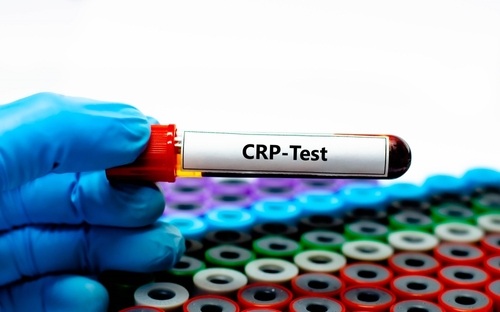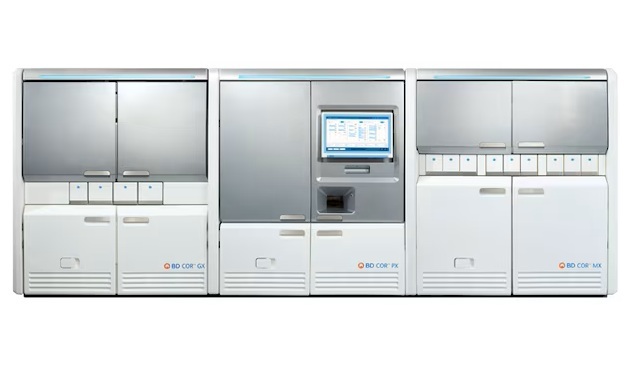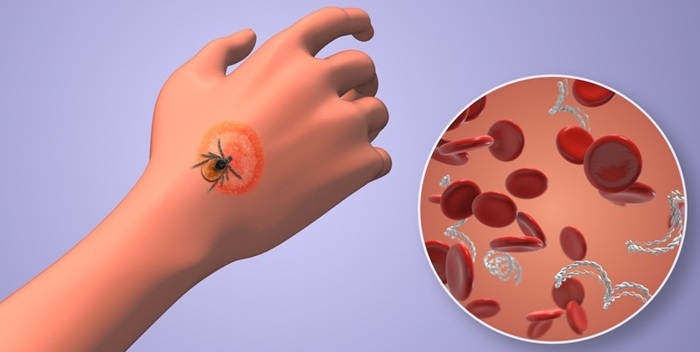Pathology Labs Replace Microscopes with Digital Imaging
|
By LabMedica International staff writers Posted on 29 Dec 2011 |
Microscopes are being replaced with digital imaging in pathology laboratories in the southern part of Sweden.
Traditional microscope glass slides are turned into digital images, which are then analyzed by pathologists directly from the computer screen, instead of using regular microscopes.
The revolution, which has already occurred in radiology, is now taking place in pathology. The contracted delivery not only digitizes the slides but also will completely renew IT support for all workflows of the pathology laboratories in the Skåne region.
Labvantage (Somerset, NJ, USA) will deliver a USD 4 million turnkey solution for digitizing the histopathological workflows in the whole region. The system will be possibly the largest such installation in the world and among the first of its kind in northern Europe. The digital slides will reside in Hitachi’s (Tokyo, Japan) Content Platform, which employs distributed object storage. All of the images will be kept well protected and duplicated across several physical discs. This makes the traditional backing up of data unnecessary.
Currently the four pathology laboratories run by Region Skåne produce about 400,000 histological microscope slides a year. The samples are prepared into microscope slides and are then physically distributed to pathologists. Slides are then analyzed using regular microscopes. There is currently limited IT support for the workflow, making it difficult to track the status of pending cases and to identify the bottlenecks in the production workflow.
The difficulties in this method are mostly related to physical slides, which can only reside–and be analyzed–in one place at a time. With the digital pathology in place, all pathologists from all laboratories of Skåne can gain access to all cases and related slides. Together with the introduction of digital pathology, another goal of Region Skåne is to introduce so-called LEAN workflows.
The digitizing will not only ease the distribution of slides for the pathologists’ viewing but will also solve the needs for storage. Swedish law requires Region Skåne to keep all slides for a minimum of 20 years, and today this requires a lot of physical space. It is also difficult to retrieve a particular case from the archive. In the digitized format, the annual production of about 400,000 glass slides will consume 300 terabytes of storage each year.
The unique changeover both in its scope and in scale is to be supplied by Software Point. A key component in the delivery is a new workflow management system, which will manage both the preanalytical and analytical stages of the laboratory process. An adapted version of Software Point’s (Espoo, Finland) C5 LIMS will be in total charge of managing the workflows and tracking all events within. It will maintain a real-time status of each sample, slide, and case, and will ease the work of both laboratory technicians and pathologists with advanced functionalities such as integration to laboratory automation, datamatrix labeling of all objects, and speech recognition for pathologists.
"This is an important milestone for us. Our workflow-centric C5 LIMS, complemented with the best of breed systems from Aperio (Vista, CA, USA) and Hitachi, make up a solution unlike anything else on the market. We see tremendous potential in digital pathology and this is one key element in our strategy for further expanding the position of our LIMS in the healthcare marketplace," comments Andrea Holmberg, CEO of Software Point.
Related Links:
Labvantage
Software Point
Aperio
Traditional microscope glass slides are turned into digital images, which are then analyzed by pathologists directly from the computer screen, instead of using regular microscopes.
The revolution, which has already occurred in radiology, is now taking place in pathology. The contracted delivery not only digitizes the slides but also will completely renew IT support for all workflows of the pathology laboratories in the Skåne region.
Labvantage (Somerset, NJ, USA) will deliver a USD 4 million turnkey solution for digitizing the histopathological workflows in the whole region. The system will be possibly the largest such installation in the world and among the first of its kind in northern Europe. The digital slides will reside in Hitachi’s (Tokyo, Japan) Content Platform, which employs distributed object storage. All of the images will be kept well protected and duplicated across several physical discs. This makes the traditional backing up of data unnecessary.
Currently the four pathology laboratories run by Region Skåne produce about 400,000 histological microscope slides a year. The samples are prepared into microscope slides and are then physically distributed to pathologists. Slides are then analyzed using regular microscopes. There is currently limited IT support for the workflow, making it difficult to track the status of pending cases and to identify the bottlenecks in the production workflow.
The difficulties in this method are mostly related to physical slides, which can only reside–and be analyzed–in one place at a time. With the digital pathology in place, all pathologists from all laboratories of Skåne can gain access to all cases and related slides. Together with the introduction of digital pathology, another goal of Region Skåne is to introduce so-called LEAN workflows.
The digitizing will not only ease the distribution of slides for the pathologists’ viewing but will also solve the needs for storage. Swedish law requires Region Skåne to keep all slides for a minimum of 20 years, and today this requires a lot of physical space. It is also difficult to retrieve a particular case from the archive. In the digitized format, the annual production of about 400,000 glass slides will consume 300 terabytes of storage each year.
The unique changeover both in its scope and in scale is to be supplied by Software Point. A key component in the delivery is a new workflow management system, which will manage both the preanalytical and analytical stages of the laboratory process. An adapted version of Software Point’s (Espoo, Finland) C5 LIMS will be in total charge of managing the workflows and tracking all events within. It will maintain a real-time status of each sample, slide, and case, and will ease the work of both laboratory technicians and pathologists with advanced functionalities such as integration to laboratory automation, datamatrix labeling of all objects, and speech recognition for pathologists.
"This is an important milestone for us. Our workflow-centric C5 LIMS, complemented with the best of breed systems from Aperio (Vista, CA, USA) and Hitachi, make up a solution unlike anything else on the market. We see tremendous potential in digital pathology and this is one key element in our strategy for further expanding the position of our LIMS in the healthcare marketplace," comments Andrea Holmberg, CEO of Software Point.
Related Links:
Labvantage
Software Point
Aperio
Latest Pathology News
- AI Tool Predicts Treatment Success in Rectal Cancer Patients
- Blood Test and Sputum Analysis Predict Acute COPD Exacerbation
- AI Tool to Transform Skin Cancer Detection with Near-Perfect Accuracy
- Unique Immune Signatures Distinguish Rare Autoimmune Condition from Multiple Sclerosis
- Simple Optical Microscopy Method Reveals Hidden Structures in Remarkable Detail
- Hydrogel-Based Technology Isolates Extracellular Vesicles for Early Disease Diagnosis
- AI Tool Improves Accuracy of Skin Cancer Detection
- Highly Sensitive Imaging Technique Detects Myelin Damage
- 3D Genome Mapping Tool to Improve Diagnosis and Treatment of Genetic Diseases
- New Molecular Analysis Tool to Improve Disease Diagnosis
- Tears Offer Noninvasive Alternative for Diagnosing Neurodegenerative Diseases
- AI-Powered Method Combines Blood Data to Accurately Measure Biological Age
- AI Tool Detects Cancer in Blood Samples In 10 Minutes
- AI Pathology Analysis System Delivers Comprehensive Cancer Diagnosis
- AI Improves Cervical Cancer Screening in Low-Resource Settings
- New Multi-Omics Tool Illuminates Cancer Progression
Channels
Clinical Chemistry
view channel
Chemical Imaging Probe Could Track and Treat Prostate Cancer
Prostate cancer remains a leading cause of illness and death among men, with many patients eventually developing resistance to standard hormone-blocking therapies. These drugs often lose effectiveness... Read more
Mismatch Between Two Common Kidney Function Tests Indicates Serious Health Problems
Creatinine has long been the standard for measuring kidney filtration, while cystatin C — a protein produced by all human cells — has been recommended as a complementary marker because it is influenced... Read moreMolecular Diagnostics
view channel
Pinprick Blood Test Could Detect Disease 10 Years Before Symptoms Appear
Many serious conditions begin silently years before symptoms appear, yet routine screening rarely detects these early physiological shifts. A powerful new solution is emerging: pinprick blood tests driven... Read more
Refined C-Reactive Protein Cutoffs Help Assess Sepsis Risk in Preterm Babies
Early-onset sepsis (EOS) is a dangerous bloodstream infection that appears in the first three days of life, yet its early symptoms resemble many benign newborn conditions. To support urgent treatment decisions,... Read more
Blood Test Accurately Detects Brain Amyloid Pathology in Symptomatic Patients
New research has reinforced the use of a novel blood test as a highly accurate tool for detecting brain amyloid pathology in symptomatic patients, helping healthcare professionals in diagnosing Alzheimer’s disease.... Read moreHematology
view channel
Platelet Activity Blood Test in Middle Age Could Identify Early Alzheimer’s Risk
Early detection of Alzheimer’s disease remains one of the biggest unmet needs in neurology, particularly because the biological changes underlying the disorder begin decades before memory symptoms appear.... Read more
Microvesicles Measurement Could Detect Vascular Injury in Sickle Cell Disease Patients
Assessing disease severity in sickle cell disease (SCD) remains challenging, especially when trying to predict hemolysis, vascular injury, and risk of complications such as vaso-occlusive crises.... Read more
ADLM’s New Coagulation Testing Guidance to Improve Care for Patients on Blood Thinners
Direct oral anticoagulants (DOACs) are one of the most common types of blood thinners. Patients take them to prevent a host of complications that could arise from blood clotting, including stroke, deep... Read moreImmunology
view channel
Gene Signature Test Predicts Response to Key Breast Cancer Treatment
DK4/6 inhibitors paired with hormone therapy have become a cornerstone treatment for advanced HR+/HER2– breast cancer, slowing tumor growth by blocking key proteins that drive cell division.... Read more
Chip Captures Cancer Cells from Blood to Help Select Right Breast Cancer Treatment
Ductal carcinoma in situ (DCIS) accounts for about a quarter of all breast cancer cases and generally carries a good prognosis. This non-invasive form of the disease may or may not become life-threatening.... Read moreMicrobiology
view channel
Rapid Assay Identifies Bloodstream Infection Pathogens Directly from Patient Samples
Bloodstream infections in sepsis progress quickly and demand rapid, precise diagnosis. Current blood-culture methods often take one to five days to identify the pathogen, leaving clinicians to treat blindly... Read more
Blood-Based Molecular Signatures to Enable Rapid EPTB Diagnosis
Extrapulmonary tuberculosis (EPTB) remains difficult to diagnose and treat because it spreads beyond the lungs and lacks easily accessible biomarkers. Despite TB infecting 10 million people yearly, the... Read more
15-Minute Blood Test Diagnoses Life-Threatening Infections in Children
Distinguishing minor childhood illnesses from potentially life-threatening infections such as sepsis or meningitis remains a major challenge in emergency care. Traditional tests can take hours, leaving... Read more
High-Throughput Enteric Panels Detect Multiple GI Bacterial Infections from Single Stool Swab Sample
Gastrointestinal (GI) infections are among the most common causes of illness worldwide, leading to over 1.7 million deaths annually and placing a heavy burden on healthcare systems. Conventional diagnostic... Read moreTechnology
view channel
AI Saliva Sensor Enables Early Detection of Head and Neck Cancer
Early detection of head and neck cancer remains difficult because the disease produces few or no symptoms in its earliest stages, and lesions often lie deep within the head or neck, where biopsy or endoscopy... Read more
AI-Powered Biosensor Technology to Enable Breath Test for Lung Cancer Detection
Detecting lung cancer early remains one of the biggest challenges in oncology, largely because current tools are invasive, expensive, or unable to identify the disease in its earliest phases.... Read moreIndustry
view channel
Abbott Acquires Cancer-Screening Company Exact Sciences
Abbott (Abbott Park, IL, USA) has entered into a definitive agreement to acquire Exact Sciences (Madison, WI, USA), enabling it to enter and lead in fast-growing cancer diagnostics segments.... Read more









 Analyzer.jpg)











